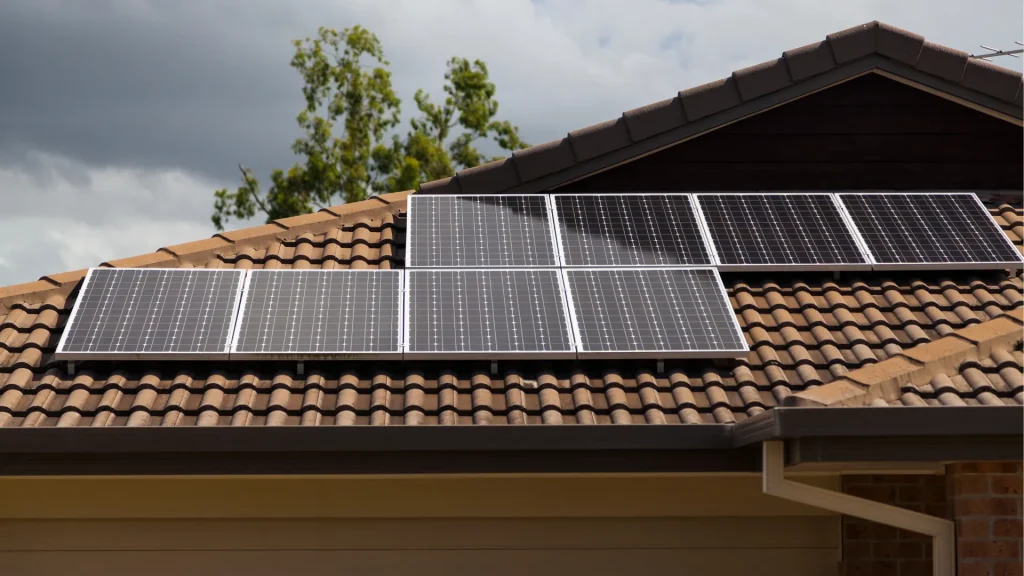
As solar energy becomes more mainstream, homeowners and builders alike are seeking solutions that offer not only efficiency but also aesthetics and durability. Enter solar shingles—the sleek, next-generation alternative to traditional solar panels. Designed to function as both roofing material and a clean energy source, solar shingles are redefining what it means to go solar.
But are they really the future of rooftop energy? In this article, we explore what solar shingles are, how they work, and whether they could become the new standard for residential solar power.
What Are Solar Shingles?
Solar shingles, also known as solar roof tiles, are photovoltaic cells that are integrated directly into roofing materials. Unlike traditional solar panels, which are mounted onto an existing roof, solar shingles replace standard roof shingles, serving a dual purpose: protecting your home and generating electricity.
Key Characteristics:
- Aesthetic Integration: Designed to look like traditional asphalt shingles or tiles, they blend seamlessly into your roofline.
- Durability: Built to withstand the same elements as traditional roofing materials—rain, hail, snow, and high winds.
- Power Generation: Each shingle contains solar cells that convert sunlight into electricity, contributing to your home’s energy needs.
How Do Solar Shingles Work?
Solar shingles operate on the same basic principle as conventional solar panels—they use photovoltaic (PV) technology to convert sunlight into electricity. Each shingle contains thin-film or monocrystalline solar cells, which absorb sunlight and create an electric current.
System Components Include:
- Shingles with Built-in Solar Cells
- Inverters to convert DC electricity to usable AC power
- Wiring connecting the shingles to your home’s electrical system
- Optional Battery Storage for storing excess power
They can be installed during new roof construction or as part of a full roof replacement, making them ideal for homeowners already planning to reroof.
Benefits of Solar Shingles
1. Aesthetic Appeal
Solar shingles offer a sleek, modern look that traditional solar panels often lack. For homeowners concerned about curb appeal, they provide an attractive solution that doesn’t scream “solar system.”
2. Space Efficiency
Because they double as roofing material, solar shingles eliminate the need for bulky panel mounts. This is especially beneficial on roofs with limited space or irregular shapes.
3. Durability and Weather Resistance
High-quality solar shingles are built to be just as strong—and often stronger—than standard shingles. They’re typically rated for wind, fire, and hail resistance.
4. Lower Maintenance
Since solar shingles are integrated into the roof structure, there are fewer mounting components and less opportunity for mechanical failure.
Challenges and Considerations
While promising, solar shingles come with a few hurdles:
1. Higher Upfront Costs
Solar shingles are more expensive than traditional solar panels—sometimes by 50–100% or more. The integrated design, specialized materials, and newer technology all contribute to a higher price tag.
2. Limited Efficiency
Because shingles are smaller and less adjustable than standard panels, their energy output per square foot is generally lower. This means you may need a larger area of roof space to generate the same amount of electricity.
3. Installation Complexity
Installation requires both roofing and electrical expertise. As a result, fewer contractors are trained to install them compared to standard solar panels, and mistakes can be costly.
4. Availability and Product Variety
Although major companies like Tesla, CertainTeed, and GAF Energy offer solar roofing products, the market is still growing. Choices may be limited depending on your location.
Who Should Consider Solar Shingles?
Solar shingles might be the right choice if:
- You’re building a new home or replacing your roof.
- Aesthetics are a major concern.
- You want an all-in-one roofing and solar solution.
- You’re willing to invest more upfront for long-term returns.
However, if your priority is maximizing electricity output for the lowest cost, traditional solar panels remain the more efficient and economical choice for now.
Are Solar Shingles the Future?
Solar shingles are not just a gimmick—they represent a significant innovation in how we think about energy production and building design. As the technology matures, production scales, and installation becomes more widespread, costs are expected to decrease, making solar shingles a more competitive option.
As energy codes tighten and sustainability becomes a requirement rather than an option, building-integrated solar systems like solar shingles are likely to play a larger role in residential construction. In the next 10 to 20 years, we may see solar rooftops that are as standard as insulation or double-pane windows.
Conclusion
Solar shingles are a powerful example of form meeting function. They blend design with renewable energy, offering a future-forward alternative to traditional panels. While not yet the most cost-effective solution for every home, their advantages in aesthetics and integration make them a compelling choice—especially for new builds or roof replacements.
So, are solar shingles the future of rooftop energy? They’re not the standard yet, but they’re undoubtedly part of it. As technology improves and demand grows, they could very well become the norm for the next generation of solar-powered homes.
